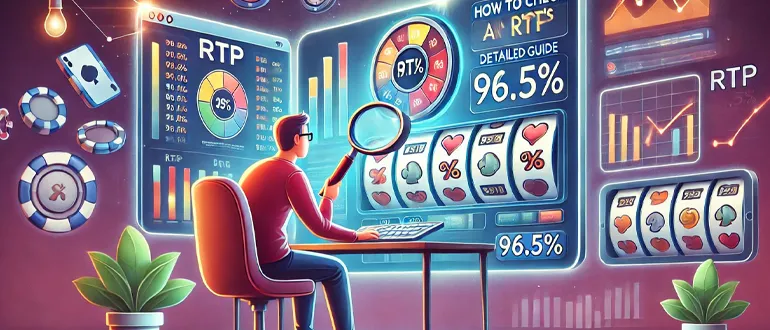
RTP (Return to Player), or “payout percentage,” is a key metric to consider when selecting a slot. It represents the percentage of total bets that the slot returns to players over the long term. Understanding RTP helps assess winning odds and make more informed game choices. In this article, we’ll explain what RTP is, why it matters, how to check a slot’s RTP, and what to look for when choosing a game. You can also find more on this topic at https://x100casino.com/.
What Is RTP and Why Does It Matter?
Defining RTP
RTP is the percentage of total bets a slot returns to players over an extended period. For example, if a slot has an RTP of 96%, it means that for every 100wagered,100wagered,96 is returned to players as winnings, while $4 is retained by the casino.
Why RTP Matters
- Winning chances: Slots with higher RTPs offer better return potential.
- Informed decisions: Helps players choose games with favorable conditions.
- Casino fairness: RTP reflects transparency and reliability in gameplay.
How to Check a Slot’s RTP
Game Information Section. Most licensed providers display a slot’s RTP in its description. Look for the “i” or “Help” button in the game interface—the rules or paytable section typically lists the RTP.
Developer’s Website. Many slot developers, such as NetEnt, Play’n GO, or Microgaming, publish game details on their official sites. Visit the provider’s website, search for the slot by name, and review its specifications.
Specialized Casino Portals. Dedicated platforms like AskGamblers, SlotCatalog, and Casino Guru provide slot metrics, including RTP. Search for the game in their database to access its parameters.
Casino Terms & FAQs. Licensed casinos must disclose RTP for all their games. Check the “Terms & Conditions” or “FAQ” section on the casino’s site to confirm if RTP data is published per game.
Demo Mode Testing. While RTP isn’t directly observable in demo play, free spins can offer insight into payout frequency. Remember, real payouts may differ from test sessions.
Key Factors When Choosing a Slot
Volatility:
- Low volatility: Frequent but smaller wins.
- High volatility: Rare but larger payouts.
Casino License: Ensures accuracy of RTP data.
Game Provider: Established developers (e.g., NetEnt, Yggdrasil) guarantee transparent RTP figures.
Benefits of High-RTP Slots
- Better long-term returns.
- Ideal for extended play sessions.
- Popular among players for their generosity.
Risks of Low-RTP Slots
- Faster budget depletion.
- Reduced winning potential over time.
Examples of High-RTP Slots
Starburst (NetEnt): 96.09% RTP.
Blood Suckers (NetEnt): 98% RTP.
Mega Joker (NetEnt): Up to 99% RTP.
1429 Uncharted Seas (Thunderkick): 98.6% RTP.
Conclusion
RTP is a crucial factor in slot selection. Verifying it helps identify the most rewarding games for long-term play. Always rely on official sources, developer data, and licensed casinos for accurate RTP information. Remember, RTP is a statistical measure—it doesn’t guarantee wins in every session. Play responsibly and enjoy the experience.












